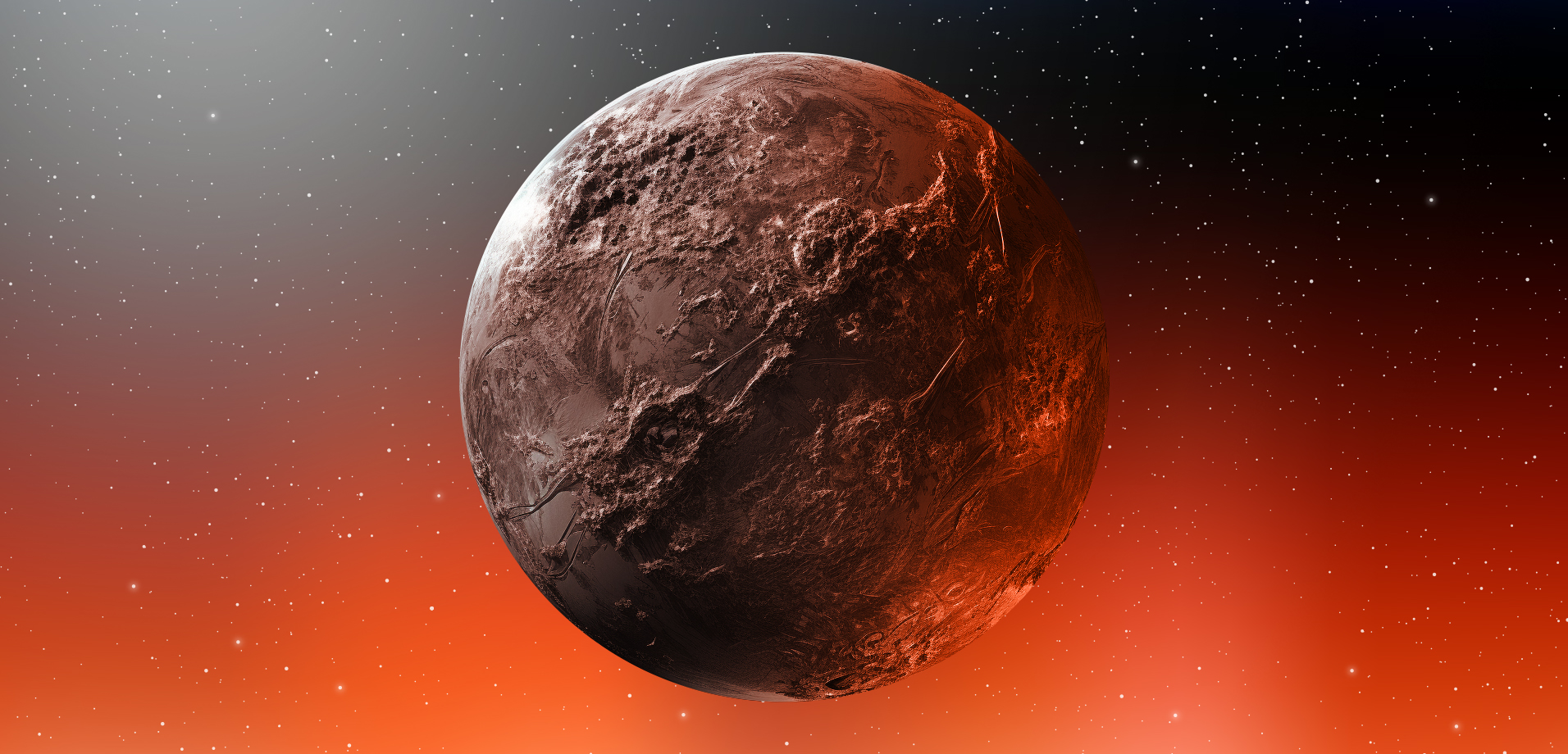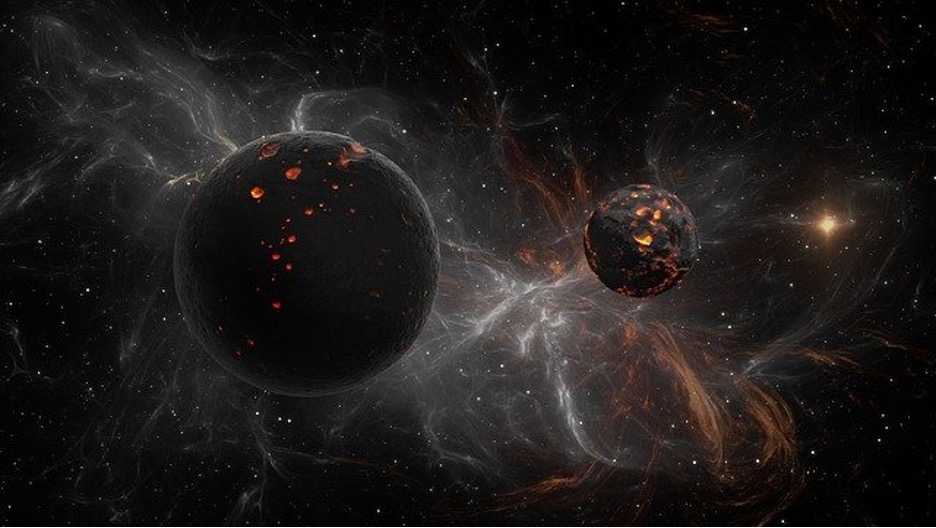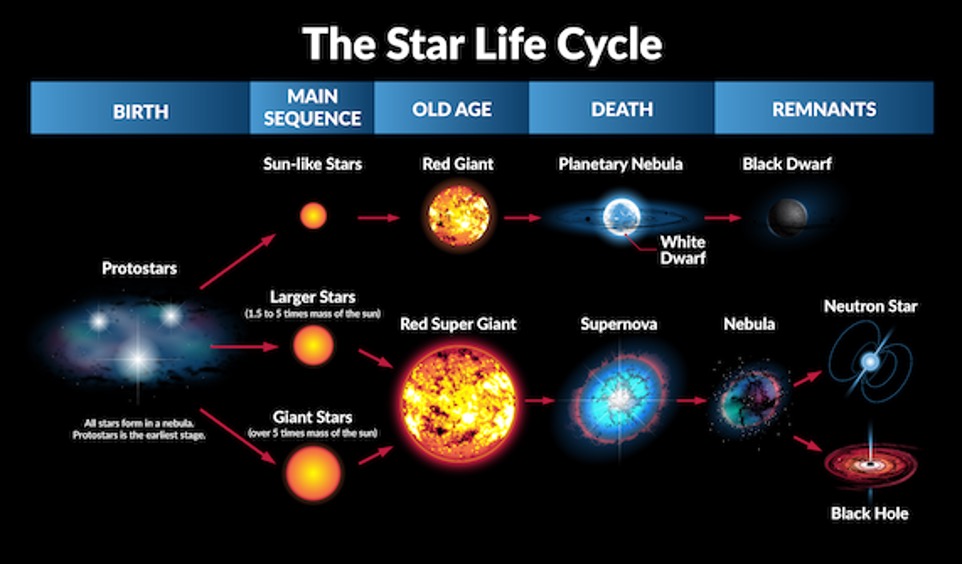From birth to ashes: What are black dwarfs, and why are they called that?
3rd Aug 2023
We know that the Sun is just one of hundreds of millions of other stars and is not eternal like everything else in the Universe. Sometime in billions of years, it will turn into a black dwarf and go out, plunging the Earth and the entire Solar system into eternal darkness. Well, if the Earth survives the prior red giant stage before our star consumes itself. We have previously told you What Happens When A Star Dies? And in this article, you will find out what is a black dwarf, why it is called that, and do black dwarfs really exist.
Definition of a black dwarf
Black dwarf or black midget is usually a name for a star with a mass of no more than 0.7 -1.4 solar masses, which has completely cooled down; that is, it has stopped the processes of thermonuclear fusion of helium from hydrogen and no longer emits any significant amount of radiation, including visible light. Scientists suggest that the temperature of a black dwarf should be close to absolute zero.
In other words, a black dwarf is the last stage in the evolution of stars like our Sun. Imagine a light bulb that has burned out and is completely cold. The same thing will someday happen to our Sun. It will stop burning, decrease in size, slowly go out and turn into a black cold little ball.
Are there any black dwarfs?
For now, black dwarfs are just a theoretical concept based on our understanding of stellar evolution. None of these have been discovered or confirmed by sightings. According to scientists, the process of cooling a star to the stage of a black dwarf takes a very long time, much longer than the age of the current Universe. Therefore, we simply cannot physically witness their existence. They just don’t exist yet.

How does a star become a black dwarf?
Scientists claim that before becoming a black midget, a star goes through several stages of evolution. Let’s consider them in order.
Protostar
Under the influence of gravity, rarefied clouds of gas in space, mainly clouds of hydrogen, begin to thicken, forming a region of increased density – a protostar. The more matter is collected in the protostar, the greater its gravity and the faster the formation of a dense object.
While the gas compresses, its temperature rises heterogeneously, leading to intense gas convection. The hot gas from the core rises to the surface, while the cooled gas sinks to the core.
Main sequence star
When the temperature in the core reaches several million degrees, the thermal energy of atomic nuclei becomes sufficient to start thermonuclear reactions of the fusion of hydrogen nuclei into helium nuclei. The star “lights up” and begins its main stage of evolution.
The duration of the main sequence stage depends on the star’s mass. The larger it is, the faster the star “burns” hydrogen. The heaviest stars go through the main sequence stage in a few million years. For the lightest stars, it lasts trillions of years.
The Sun is a medium-mass star with a lifespan of about 10 billion years. Now it is in the middle of its life cycle. So the question of when the Sun will become a black dwarf will be irrelevant for a long time to come.
Red giant
As the hydrogen reserves in the core are exhausted, the pressure inside the star drops, and it loses its stability. The core begins to shrink under the influence of gravity, which makes helium merge into the cores of more stable and heavier elements – carbon, neon, oxygen and iron.
In the middle part of the star, the temperature is lower, and the helium “burning” reactions in it begin later. Due to this energy, the upper layers of the star expand. So the star gradually turns into a red giant.
Planetary nebula and white dwarf
The red giant stage lasts from 10 to 100 million years. Further, depending on the specific conditions, the outer layers can scatter or explode, forming a nebula. At the centre of the nebula remains the core – a white dwarf.
At this stage, stars with a mass much larger than the Sun suffer a different fate. They explode into supernovae and then turn into either protostars or black holes.
Here’s what it looks like schematically.

What is the difference between a white dwarf and a black dwarf?
The main difference between white and black dwarfs is that there is life in the first, although it is gradually fading away. In fact, this is the star’s core, which has lost its outer layers, condensed to the size of the Earth, but retained a mass comparable to the mass of the Sun. A white dwarf radiates residual heat and light, but its temperature gradually decreases. So what turns a white dwarf black? Time! When a white dwarf completely goes out and cools down to absolute zero, it will become a black dwarf. But it could take trillions of years!
What is a black dwarf made of?
Black midgets are composed primarily of carbon and oxygen. These elements are formed at the stage of transformation of a star into a red giant when the hydrogen reserves are exhausted, and the core begins to shrink. During a nuclear reaction called the triple-alpha process, three helium nuclei (alpha particles) fuse together to form a carbon nucleus. The process begins with two helium atoms colliding and fusing to form a beryllium-8 nucleus. Beryllium-8 is unstable and quickly decays back into two helium atoms due to the Coulomb repulsion of protons in the nucleus. However, if the process occurs at a high enough density and temperature, then a third helium atom can trap this beryllium-8 and form a carbon-12 nucleus.
After the formation of carbon through the triple-alpha process, carbon can become the starting material for further nuclear reactions, including the synthesis of oxygen, neon and other elements. From them, the core of a white, and then a black dwarf, is subsequently formed.
Can you touch a black dwarf?
If we imagine that the black dwarf star exists, and we could get to it, then in the usual sense, it would be impossible to touch it. A black dwarf is a very dense celestial body consisting of degenerate matter subject to quantum effects. Its electrons are compressed so tightly that they obey the Pauli exclusion principle, which forbids two electrons from being in the same quantum state with the same quantum numbers. This creates a huge electrostatic resistance, making physical contact with the object impossible.
What happens after a black dwarf?
So far, our knowledge of physics does not extend far enough to determine the fate of those things and objects that have not yet appeared. But the hypotheses haven’t been cancelled, and one of them says that black dwarfs will emit particles and gradually lose mass and energy due to a process called Hawking radiation. However, this will take trillions or even quadrillions of years.






Thank you for your comment! It will be visible on the site after moderation.